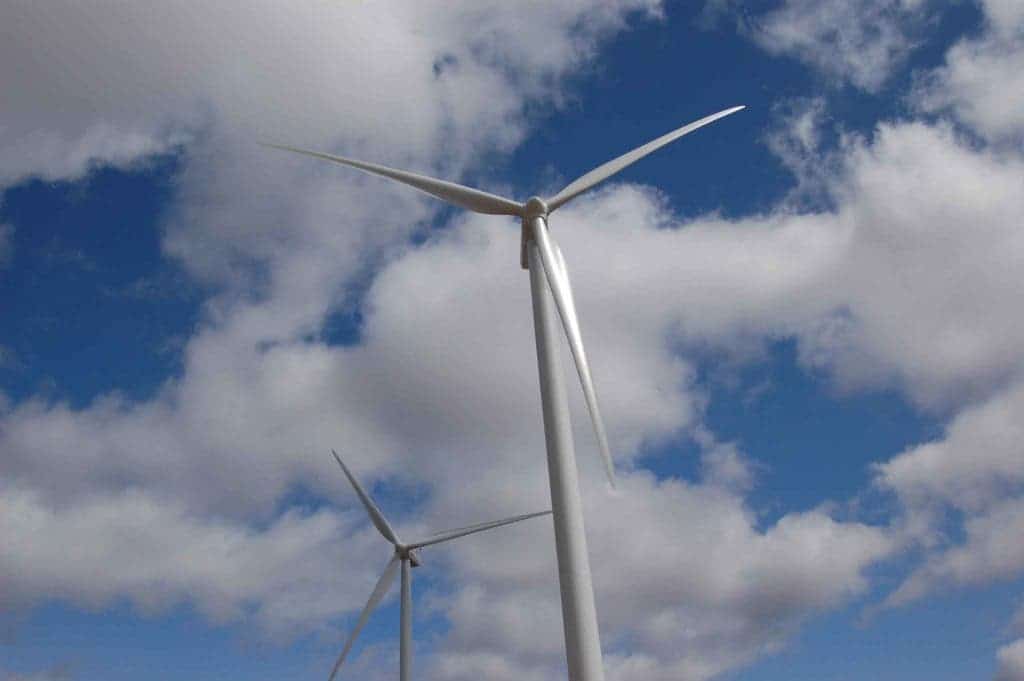Renewable energy is expanding quickly across the globe, but so are concerns over the impact of wind farms on wildlife. Wind turbines, in particular, have shown their potential to generate clean energy, but there are also concerns about their potential threat to birds.
A new study looked at the issue further, noting that wind turbines can affect bird populations — but there are ways to minimize the impact through wind turbine design and placement.

The study, published in Energy Science, estimated that about 150,000 birds are affected by wind turbines in the U.S. every year. This includes bird collisions with turbines as well as changes in bird habitat due to wind disturbances. When looking specifically at grassland birds, researchers found fewer negative impacts.
“We found that there was a negative impact of three birds lost for every turbine within 400 meters of bird habitat. The impact faded away as distance increased,” Madhu Khanna, co-author of the study and professor at the University of Illinois, said.
The researchers looked at data on wind turbines, breeding birds, land use, and weather across the United States over a six-year period. The study included 1,670 wind turbines and 86 bird observation routes across 36 states from 2008 to 2014.
The negative impacts on birds identified in this study are lower than estimates from some other studies. However, those studies were done on a smaller scale. This research uses a large dataset over a longer time frame, yielding more systematic and accurate information.
“We compared bird routes that were close to turbines with those that were further away, making it possible to more easily and precisely identify the impact of the turbine, while controlling for other unobservable factors,” explained Ruiqing Miao, assistant professor of agricultural economics at Auburn University and lead author on the study.
While there’s an impact, there are a set of key factors that can help reduce it, the study argued. The size of the wind turbine and the length of the blades make a difference, as taller turbines and shorter blades reduce the impact on birds. Other studies have found that turbine height was negatively correlated with bird count.
As the impact on birds diminishes as the distance increases, the researchers suggested that wind turbines be placed outside a 1,600-meter buffer zone of high-density bird habitats.
Policy decisions regarding wind energy must consider the tradeoff between sustainable energy and bird populations, Khanna points out. “No single technology is such that it is only beneficial and has no negative consequences. You can minimize the effect by making the recommended adjustments,” she said.
Limited effect
This is not the first time a study looks at the effect of wind turbines on wildlife. While there is an impact, if they are well-sited and managed the impact is much lower. Environmental organizations such as BirdLife have expressed their support to the deploy of renewables, highlighting windmills don’t pose unacceptable risks.
Wind farms have one of the lowest rates of impact on birds (and other wildlife) of any form of power generation. Cats, buildings, and cars pose a higher danger, according to the National Audubon Society.
Statistically, wind turbines kill between 214,000 and 368,000 birds every year. On the other hand, cell and radio towers take the lives of 6.8 million birds annually. On top of that, cats are responsible for about 1.4 billion to 3.7 billion bird deaths.
A 2009 study that used European and US data on bird deaths concluded that fossil fuel-based power stations kill fifteen times more birds than wind and nuclear power stations.
The study remarked that nuclear power stations and wind farms caused about 0.3-0.4 fatalities for every gigawatt-hour (GWh). On the flip side, power stations that run on fossil fuels lead to 5.2 fatalities per GWh.
On top of all, there’s an even larger threat to birds and all species – global warming. Increasing temperatures are causing changes in bird migration and reproduction patterns, as well as impacting habitats, food and water sources, and nesting sites. In Europe, a warming climate accounts for the decline in 92 bird species, while in North America, 314 species are imperilled.









